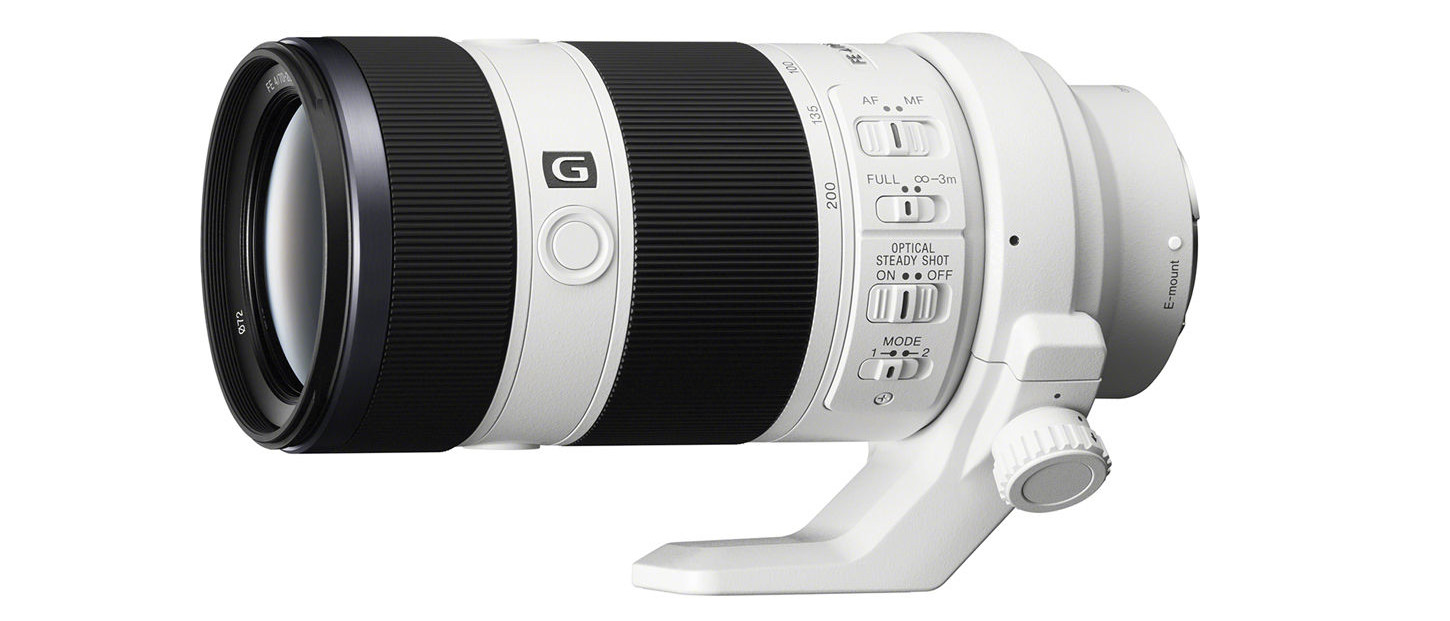Digital Camera World Verdict
For those that don’t demand a ‘trinity’ 70-200mm with a faster f/2.8 aperture, this f/4 lens is a more lightweight and easily manageable affair. It still comes with a heat-reflecting white paintjob and handling exotica aplenty but performance isn’t entirely great and it costs about the same price as independent 70-200mm f/2.8 zooms from the likes of Sigma and Tamron.
Pros
- +
High-end handling
- +
Good build quality
- +
Mostly good performance
Cons
- -
Pricey for a 70-200mm f/4
- -
Mediocre edge-sharpness
- -
Noticeable fringing and distortion
Why you can trust Digital Camera World
The Sony FE 70-200mm f/4 G OSS delivers a classic telephoto zoom range, making it highly versatile for everything from weddings and events to sports and wildlife photography. Naturally, it’s an f/stop slower than 70-200mm f/2.8 ‘trinity’ zooms but the upside is a saving in weight and cost, at least compared with Sony’s own-brand trinity FE 70-200mm f/2.8 GM OSS.
Specifications
Sony model number: SEL70200G
Mount: Sony E (FE)
Full-frame: Yes
Autofocus: Yes
Stabilization: Yes
Lens construction: 21 elements in 15 groups
Angle of view: 34-12 degrees
Diaphragm blades: 9
Minimum aperture: f/22
Minimum focusing distance: 1.0m
Maximum magnification ratio: 0.13x
Filter size: 72mm
Dimensions: 80x175mm
Weight: 840g
Key features
Glass is at the heart of any lens and, in this respect, the Sony looks good on paper. It features two high-precision AA (Advanced Aspherical) elements, a pair of ED (Extra-low Dispersion) elements plus a Super ED element. Sony’s Nano AR anti-reflective coating is also on hand to minimize ghosting and flare, and the 9-blade aperture diaphragm is well-rounded.
Autofocus is courtesy of dual linear stepping motors which are quick and ultra-quiet, driving a fully internal system so the front element neither extends nor rotates during focusing. Along with rapid and reliable autofocus, a further boost to sharpness in practical terms comes from Optical SteadyShot (image stabilization), which we’ll come back to later.
A relatively lightweight build enhances handling and there’s plenty of switches and buttons to play with. Up front is a rank of three customizable buttons, nominally assigned to autofocus-hold. At the back end are an AF/MF switch, an autofocus range limiter switch that can lock out the short end between 1-3 meters, and two Optical SteadyShot switches for on/off and static/panning modes.
Build quality feels solid, robust and features weather-seals, although there’s no rubber ring on the mounting plate to guard against the ingress of dust and moisture between the lens and camera body. Unlike some f/4 telephoto zooms, the Sony comes complete with a tripod/monopod mounting collar which is completely removable.
Performance
The lens lives up to its claims in terms of autofocus speed but the performance of the optical stabilizer is disappointing by the latest standards. It generally gave an effectiveness of around 2.5 stops in our tests, although performance is boosted a little when combined with the in-body stabilizers of later Sony Alpha cameras. Center-sharpness is excellent at all focal lengths but edge-sharpness is comparatively mediocre at both ends of the zoom range, where color fringing can also be evident.
Lab results
We run a range of lab tests under controlled conditions, using the Imatest Master testing suite. Photos of test charts are taken across the range of apertures and zooms (where available), then analyzed for sharpness, distortion and chromatic aberrations.
We use Imatest SFR (spatial frequency response) charts and analysis software to plot lens resolution at the center of the image frame, corners and mid-point distances, across the range of aperture settings and, with zoom lenses, at four different focal lengths. The tests also measure distortion and color fringing (chromatic aberration).
Sharpness:
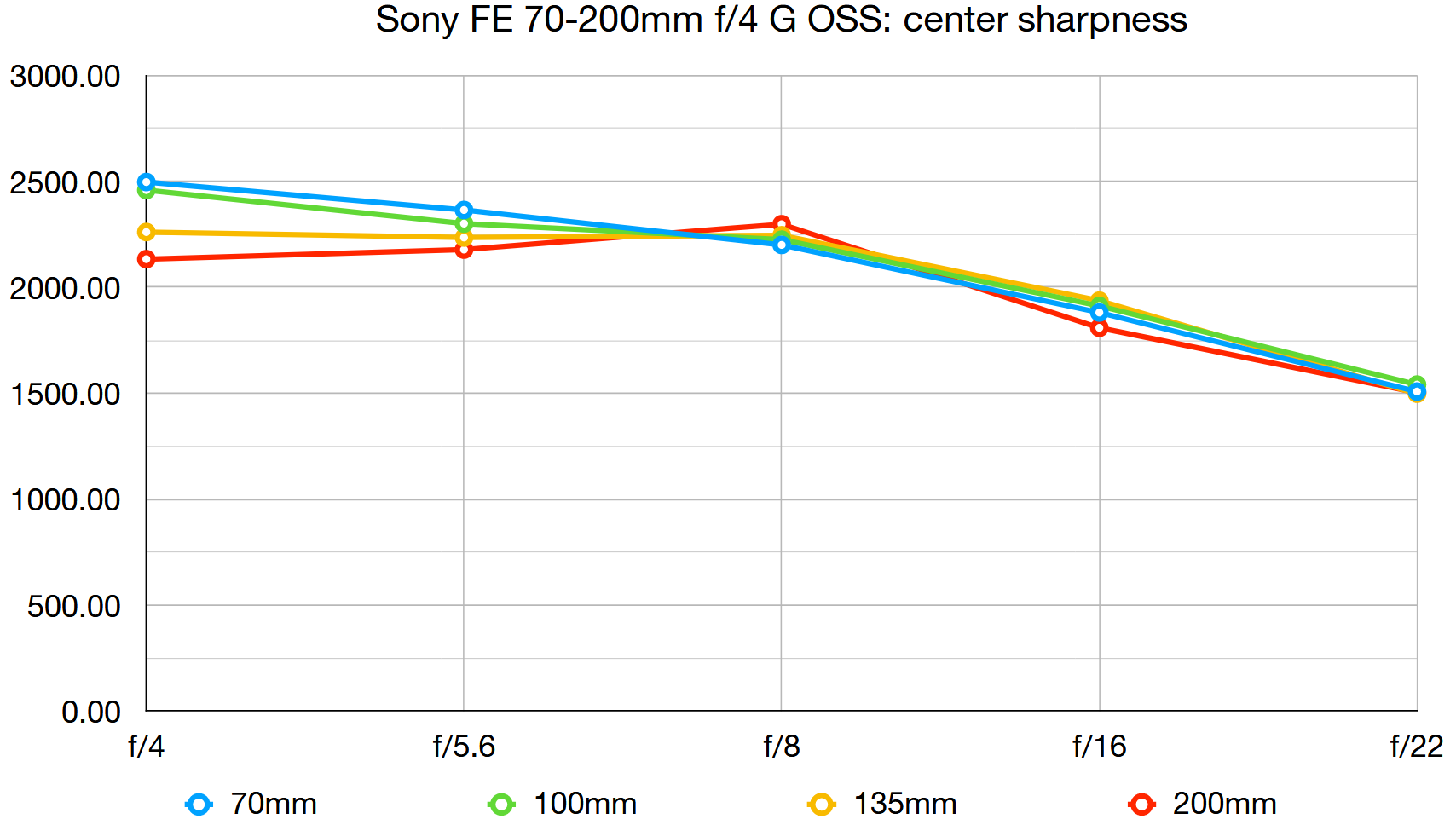
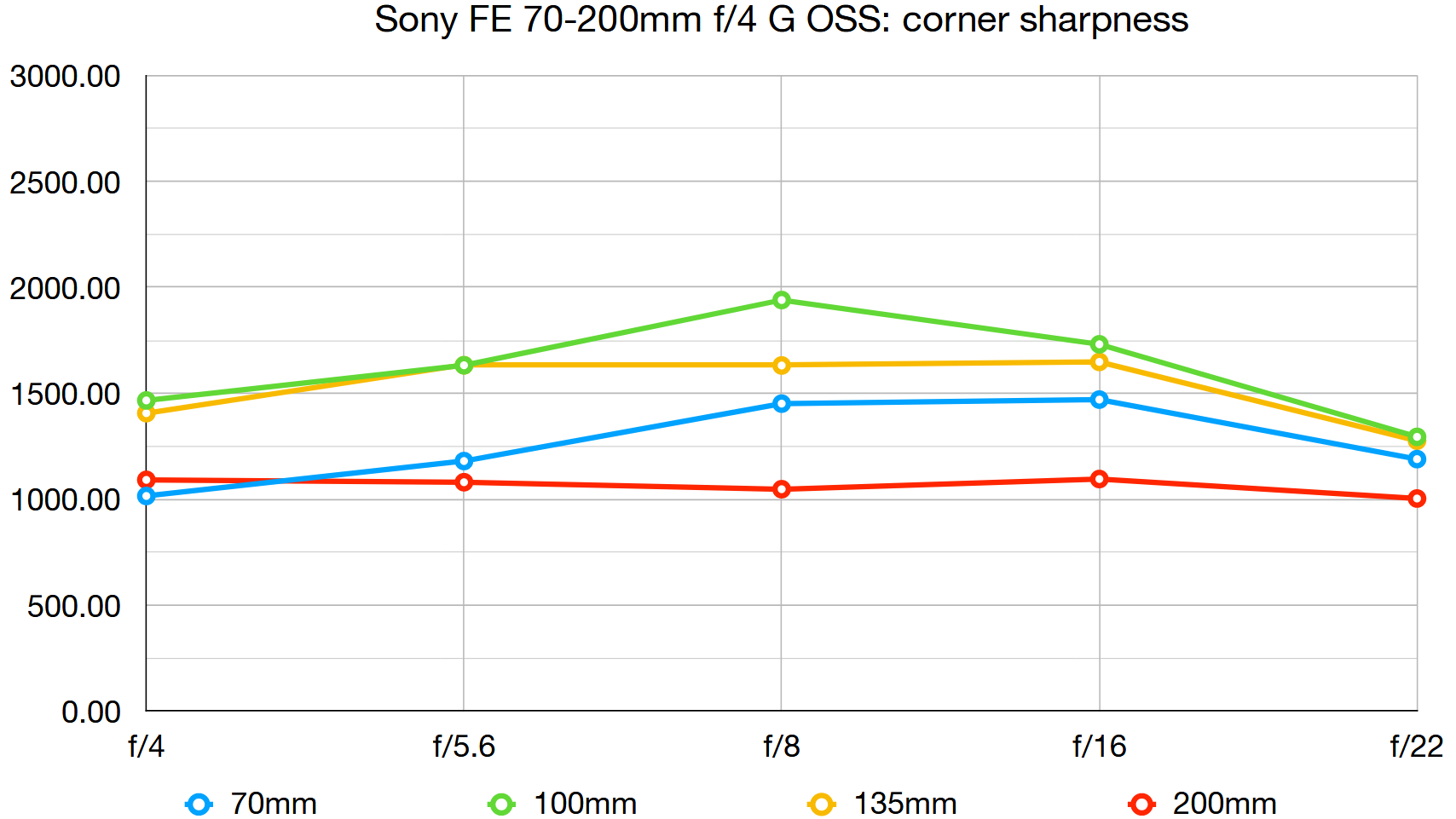
Excellent center-sharpness is maintained even when shooting wide-open at f/4, throughout the entire zoom range. At 70mm, however, edge-sharpness is comparatively lackluster at f/4-5.6 and at 200mm it’s relatively disappointing at all apertures.
Fringing:
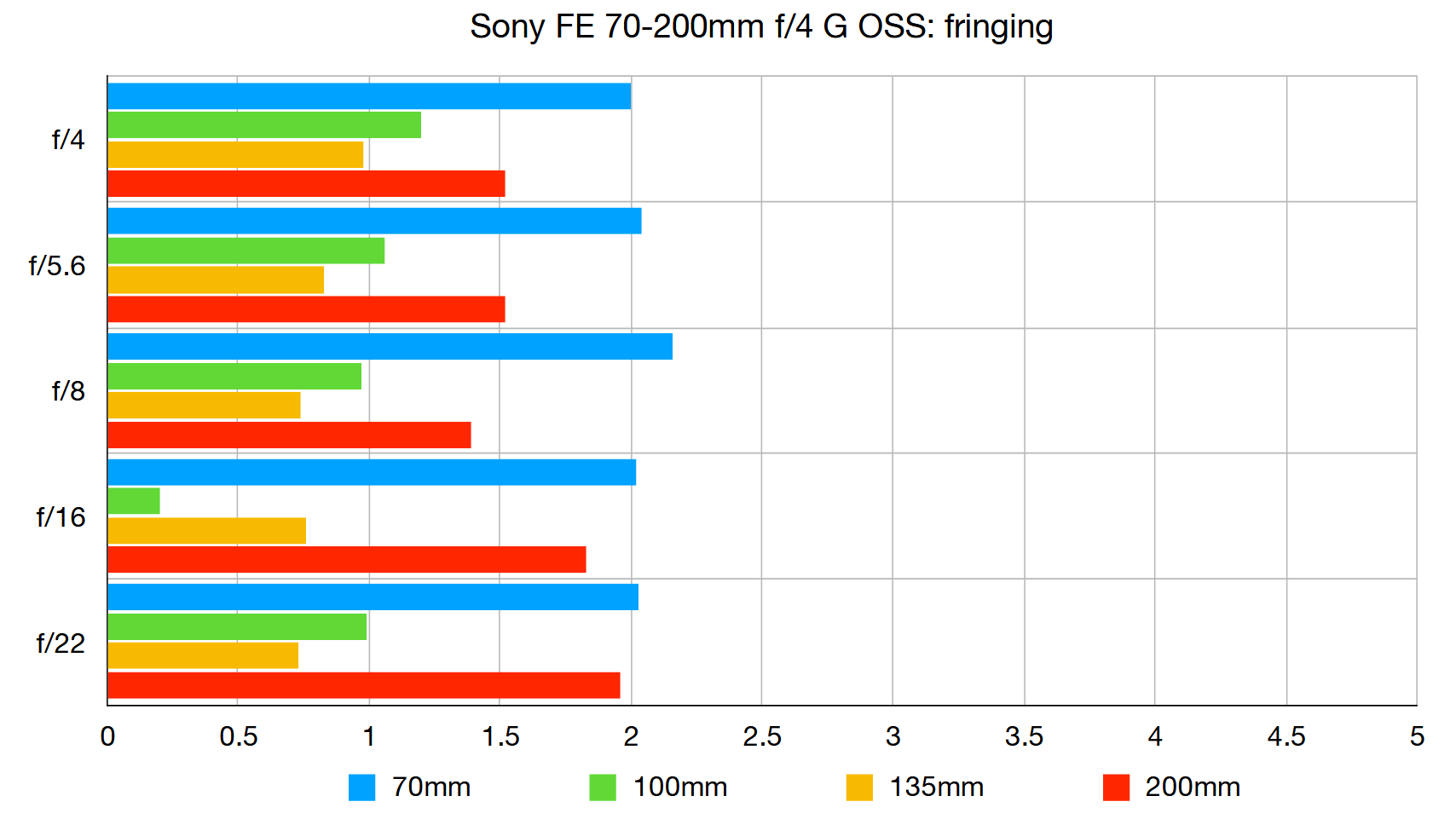
Color fringing can be noticeable towards the edges and corners of the frame, especially at both ends of the zoom range, although in-camera correction is available and provides an effective fix.
Distortion:
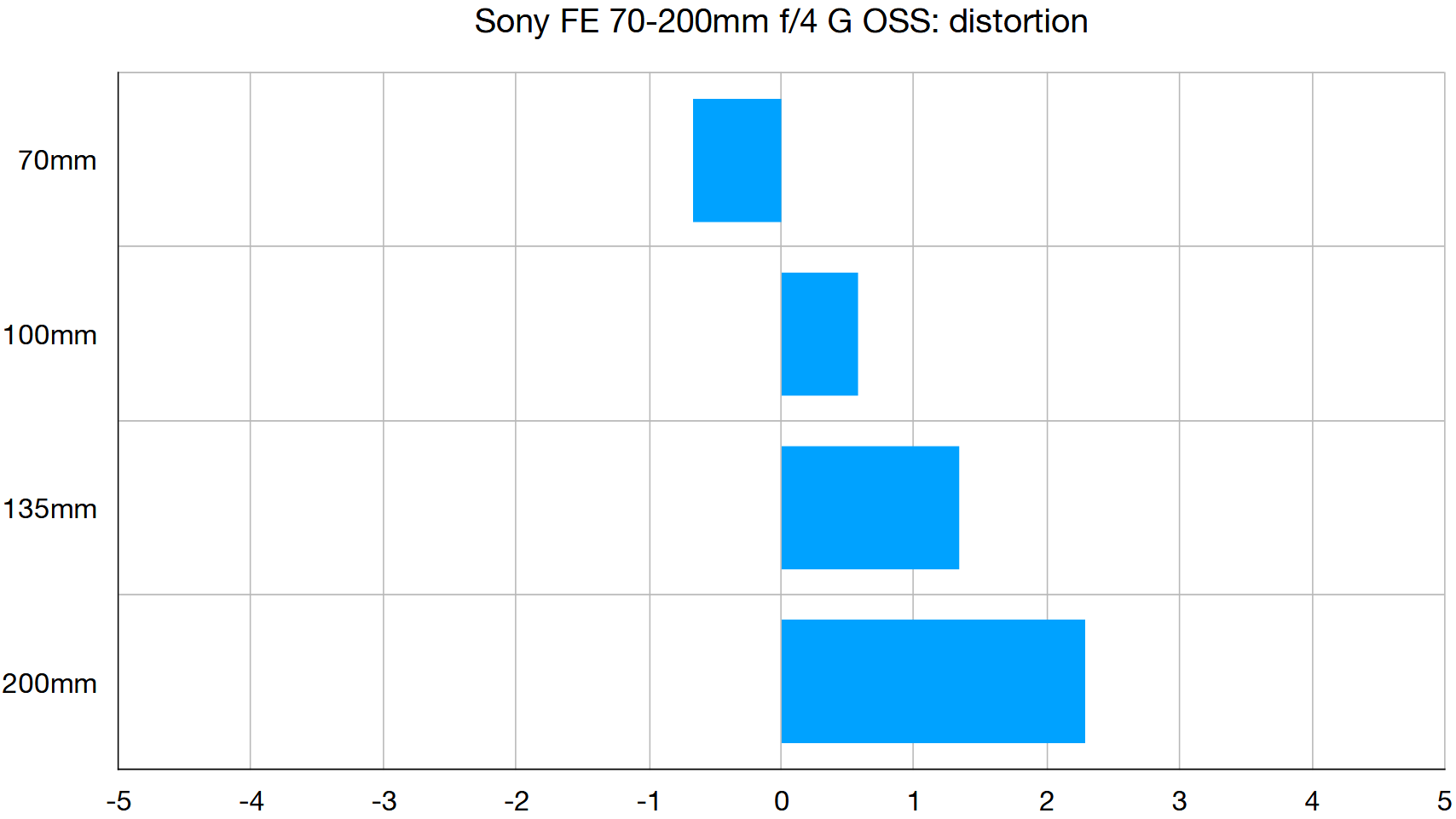
There’s only minor barrel distortion at 70mm, switching to minor pincushion at 100mm. Pincushion distortion becomes more noticeable as you extend through the 135-200mm sector of the zoom range.
Verdict
For those that don’t demand a ‘trinity’ 70-200mm with a faster f/2.8 aperture, this f/4 lens is a more lightweight and easily manageable affair. It still comes with a heat-reflecting white paintjob and handling exotica aplenty but performance isn’t entirely great and it costs about the same price as independent 70-200mm f/2.8 zooms from the likes of Sigma and Tamron.
Read more:
• Best camera lenses to get
• Best Canon lenses
• Best Nikon lenses
• Best Sony lenses
Matthew Richards is a photographer and journalist who has spent years using and reviewing all manner of photo gear. He is Digital Camera World's principal lens reviewer – and has tested more primes and zooms than most people have had hot dinners!
His expertise with equipment doesn’t end there, though. He is also an encyclopedia when it comes to all manner of cameras, camera holsters and bags, flashguns, tripods and heads, printers, papers and inks, and just about anything imaging-related.
In an earlier life he was a broadcast engineer at the BBC, as well as a former editor of PC Guide.
